Motorcycle Investor mag
Subscribe to our free email news
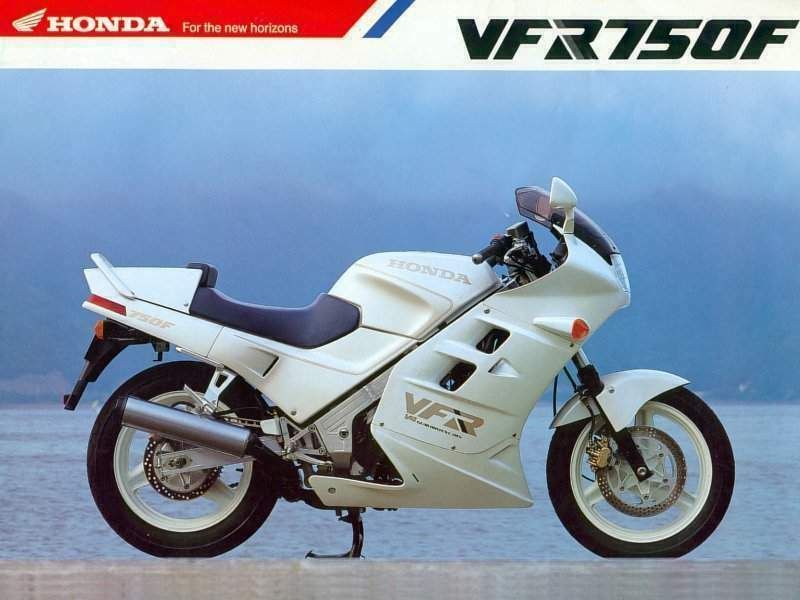
Future collectible – Honda VFR750F
(October 2020)

V-Force
by Guy ‘Guido’ Allen
Honda’s VFR series was sent out to recover the maker’s battered reputation and became a standard-setter
For those of us who’ve been around long enough to know who Joey Dunlop was (an heroic Irish racer who seemed to ‘own’ the Isle of Man TT in the eighties) it’s incomprehensible these days that Aprilia and Ducati make headlines with their performance V-fours, while we hear barely a squeak from Honda.
A few decades back, things were different. Dunlop, Honda V-fours and Isle of Man victory were synonymous through the 1980s and into the 1990s.
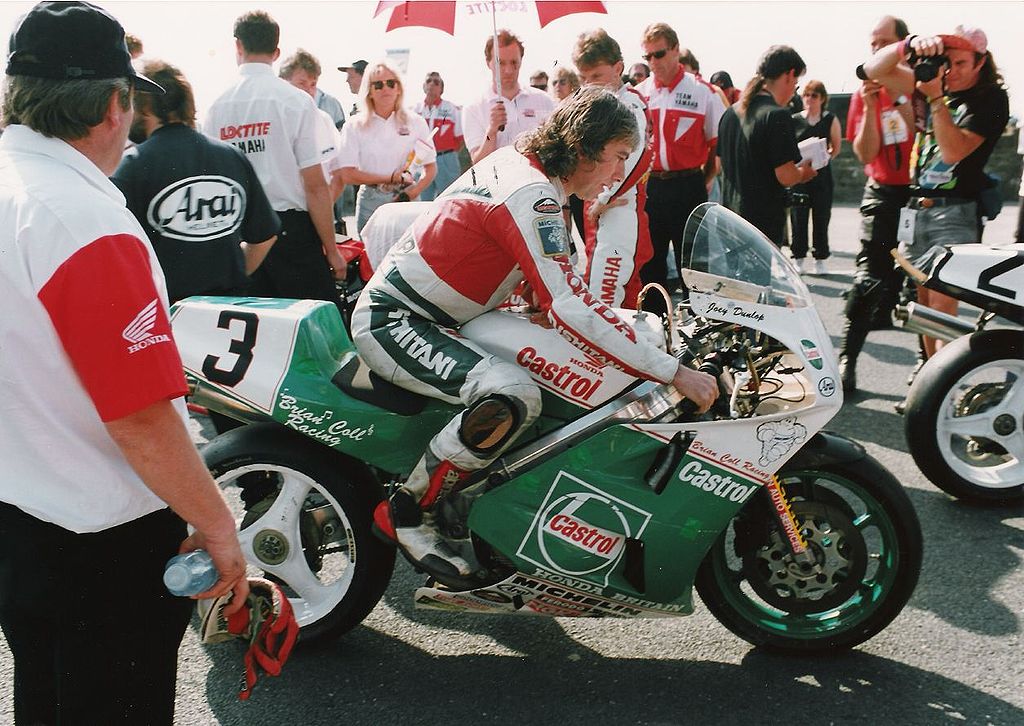
(Above: Joey Dunlop IoM Senior TT start, 1992, RC45. Pic by Christof Berger, Wikimedia Commons)
So there was a time when, if you said you were riding a VFR750 Honda (aka Interceptor in some markets), it made a very real connection to the world of racing. However it was the in-line four Fireblade series that was to take over the sports mantle, leaving the Viffer to soldier on as a sports tourer.
That it did very well, to the point where it was pretty much universally praised as being an exceptional all-rounder.

First introduced in 1986, the VFR series was Honda’s second crack at the whole V-four platform. The company had introduced a line of V-fours from 1982, but the VF750F (above) and VF1000F famously had issues with the hardening giving way on valve train components. The end result was the top ends chewed out. Though the company tried to address the issue, the dramas effectively killed off the VF.
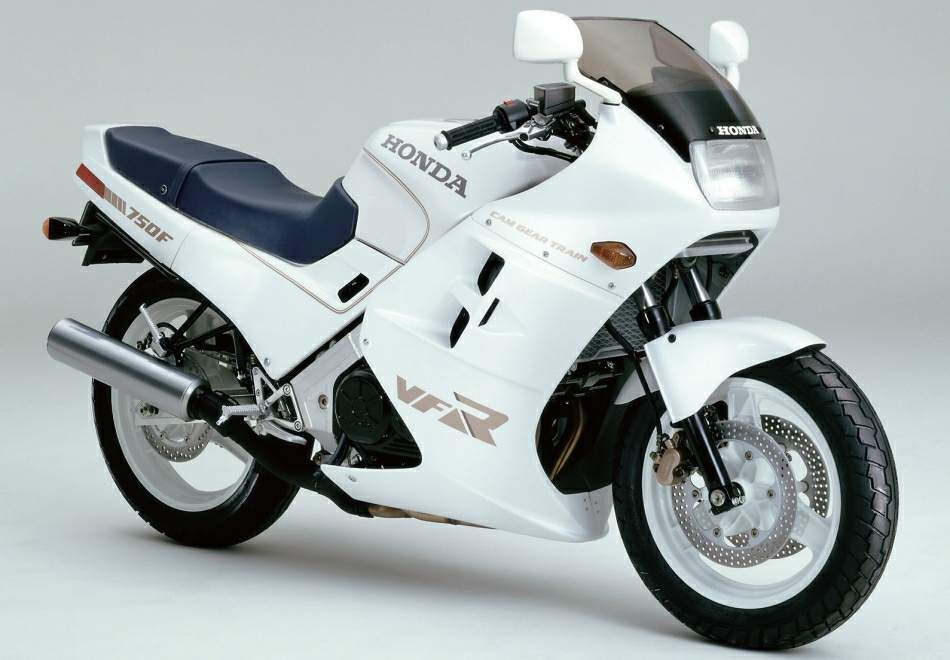
Enter the VFR750F, which the firm went to great lengths to, if anything, over-engineer. In addition to a new look and a new frame, it featured gear-driven cams. This was not new technology, but it was rare, expensive to produce and tough.
There was no question it was a capable enough bit of kit on the track, but more at home on the road.
Its 100-ish horsepower claim meant it was on a par with the Suzuki GSX-R750 of the day when it came to grunt, though it tipped the scales about 12 kilos heavier at a claimed dry heft of 198kg. Even so, very respectable figures and it added up to performance that would give an 1100 road bike of a few years earlier a very serious scare. We’re talking of a 240km/h top speed.

The one bone of contention was the fitting of the then briefly fashionable 16-inch front wheel. Everyone seemed to have them on their premium road models at the time and the offending item was ditched with the next generation, launched in 1988.
What Honda got absolutely right with this motorcycle was the overall compromise between performance, agility, stability, and user-friendly manners. It was spectacular for its day and that overall demeanor became a VFR trademark across all three generations of the 750.
While it would have been tempting for Honda to switch the wheel rims and not much else with the second model of 1988-89, there were numerous major and minor tweaks. For example, the valves were enlarged a little and the tuning altered for a fatter midrange. The front suspension was beefed up and there were a couple of niceties added, such as a fuel gauge and clock.

Roll into 1990 and Honda has decided to give the now four-year-old machine a proper makeover. The factory code for the model has changed from RC24 to RC36, and there are two big visual give-aways: a twin-headlamp fairing, plus a single-side rear swingarm. It’s really the latter that got all the attention, as it instantly changed the overall visuals to something a little exotic that shared a critical visual cue with the factory racers of the day.
This was still very much a sports tourer, and the performance gains were incremental rather than earth-shattering. Honda had gone for wider wheel rims, upgraded suspension and brakes, but had done relatively little in the engine department. In fact, the VFR750 claimed pretty much the same horsepower throughout its model life.

The 1994-97 RC36 was the last throw of the dice for the 750s, which went through a similar process to the second-model RC24: lots of detail changes. Honda’s stand-out goal with the final version was to change the styling to something with a family resemblance to the ultra-exotic NR750 eight-valver road bike. Its looks were controversial at the time, though these days it’s harder to see what the fuss was about.
Under the panels, the VFR750FR-onwards featured a host of little weight-saving touches, a slight gain in fuel capacity, a touch more lean forward in the ride position and revised suspension.
Though we’re by now talking of a near decade-old platform, and one that if anything had been sidelined into sports-tourer territory, the VFR remained a very quick and impressive motorcycle right up to the last days of the 750.
There were plenty of faster and sharper transports of delight out there – Honda’s own Fireblade among them – but the VFR had become the benchmark for a do-anything style road bike.
The V-four powerplant had a lilt that’s very distinctive, combining some of the virtues of a V-twin with a multi, while the chassis was capable of holding the plot together at some pretty serious speeds. Perhaps more importantly, it went a long way towards recovering the marque’s reputation after the VF embarrassment.
In fact, the VFR was the direct opposite of its predecessor, proving to be damn near indestructible so long as it was shown some basic maintenance.
So what models to have? If I were picking, I’d say the first generation, because they’re historically significant in the corporate line-up. And the last. It was the ultimate expression of the model and draws that link to the wild if flawed NR project.
Here’s the catch: neither is going to make you rich in the short or even medium term. I really don’t think this model is even starting to get on the collector radar. It will. The upside is that they’re cheap and a well-serviced one remains a damn capable ride. Prices seem to be around the $3000-6000 mark for one in decent working order.
Your biggest challenge will be finding one that hasn’t been to the moon and back, as people really use these things. If you do happen to find that apocryphal forgotten beauty hiding under a dust sheet in a shed, grab it!
***
VFR750 generations
1986-87: VFR750FG and FH (aka RC24)
16-inch front wheel.
1988-89: VFR750FJ and FK (aka RC24)
17-inch front wheel. Numerous upgrades including thicker front fork.
1990-93: VFR750FL FM FN FP (aka RC36)
Major redesign, including bodywork, frame and engine.
1994-97: VFR750FR FS FT FV (aka RC36)
Numerous upgrades, bodywork changed to NR750-influenced styling.
The exotics
There are three guaranteed collectible versions of the V-four platform, namely the RC30, RC45 and RC40. The first two were essentially race homologation versions of the road bikes, albeit completely re-engineered to be lighter, smaller and faster.
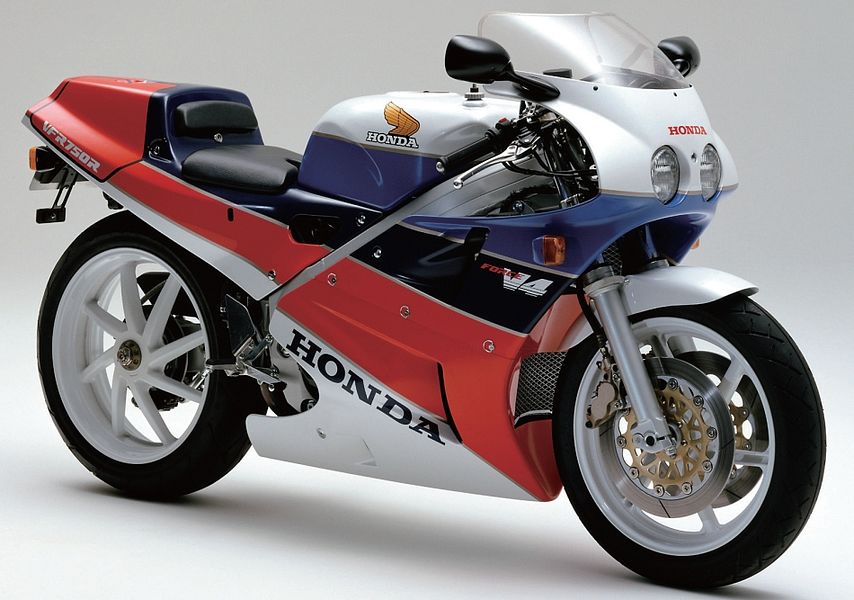
The RC30 (above) is the machine that really ‘made’ the name of V-four Hondas in international competition and was built from 1987 to 1990. Priced around three times the cost of the normal road-going VFR, some 4782 were made. Keen punters could also buy a race kit for them.
As for the RC45 (above), this is one of the most rare Hondas – only 200 were built in 1990. That’s it. Up to half that number would have ended up on the racetrack.
Last but not least is the NR750 (above), aka the RC40. This 1992 production of around 300 motorcycles was the road-going ‘baby’ of a bold but not entirely successful experiment to build a four-stroke motorcycle that could compete with the dominant two-stroke Grand Prix 500s during the 1980s. It was ultra expensive and distinguished by its unique ‘oval’ eight-valve pistons.
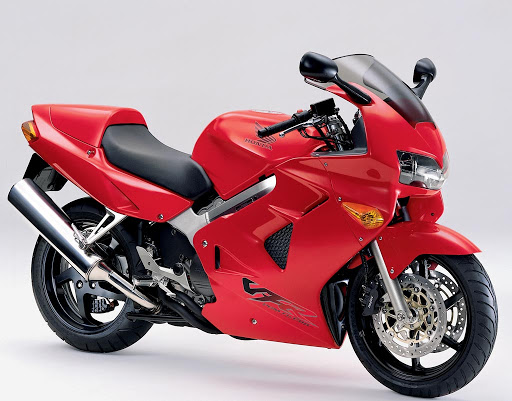
What about the 800?
The 750 was superseded by the VFR800 (above) from 1998. Fuel injected and fitted with linked brakes (known as DCBS), it was somewhat changed in character, with just a little less ‘edgyness’ to it.
In 2002, the engine (which was very different from the VFR750) switched from gear to chain cam drive and adopted the VTEC variable valve actuation.
In 2014 it went through a major revision, including a weight loss program. Though no longer sold in Australia, it remains available overseas.

SPECS:
Honda VFR750F (1994-97)
ENGINE:
TYPE: Liquid-cooled, four-valves-per-cylinder, 90-degree V-four
CAPACITY: 748cc
BORE & STROKE: 70 x 48.6mm
COMPRESSION RATIO: 11:1
FUEL SYSTEM: 4 x 36mm Keihin flat-slide
TRANSMISSION:
TYPE: Six-speed, constant-mesh,
FINAL DRIVE: Chain
CHASSIS & RUNNING GEAR:
FRAME TYPE: Aluminium twin-spar
FRONT SUSPENSION: 41mm conventional telescopic fork, 140mm travel
REAR SUSPENSION: Pro-link monoshock, 130mm travel
FRONT BRAKE: 296mm discs with two-piston caliper
REAR BRAKE: 256mm disc with two-piston caliper
DIMENSIONS & CAPACITIES:
DRY/WET WEIGHT: 209/226kg
SEAT HEIGHT: 800mm
WHEELBASE: 1470mm
FUEL CAPACITY: 21Lt
WHEELS & TYRES:
FRONT: Cast aluminium with 120/70 VR17 tyre
REAR: Cast aluminium with 170/60 VR17 tyre
PERFORMANCE:
POWER: 76kW @10,000rpm
TORQUE: 73Nm 8000rpm
OTHER STUFF:
PRICE NEW (1994): $7400 plus ORC
GOOD
Lovely engine
Good all rounder
Reliable
BAD
Hard to find in good nick
-------------------------------------------------
Produced by AllMoto abn 61 400 694 722
Privacy: we do not collect cookies or any other data.

Archives
Contact




